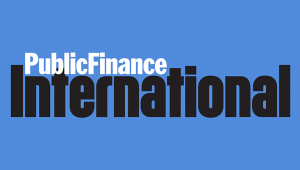Poorly performing publicly owned enterprises, outsourced services and opaque sovereign debt all mean governments could be exposed to further shocks, it said.
Services delivered via public-private partnerships or concessions have seen plummeting revenues amid the economic slowdown caused by Covid-19, the report said.
Similarly, state-owned utility companies have held off on tariff increases and accepted bill arrears to avoid hurting households – a trend that continues in many countries as cost of living fears grow. Such companies – and even important financial institutions – might need rescuing if they are under threat of collapse, the report said.
“Sooner or later, the losses could end up on the budget,” it warned.
A 2016 International Monetary Fund paper found the average fiscal cost of realising contingent liabilities is 6% of GDP, reaching up to 40% for major financial sector bailouts.
Increased complexity in sovereign debt markets provides another risk, the report said. In 2020, the average total debt burden of low- and middle-income countries grew by 9% of GDP, compared with an annual average of 1.9% the previous decade.
But an unknown amount of debt is ‘hidden’ with quasi-sovereign entities, state-owned vehicles and private companies, and arrangements are not typically recognised as debt.
Many new bilateral loans also contain lengthy non-disclosure clauses. This lack of transparency makes it hard to assess the precise level of danger the debt poses – and harder for governments to manage and restructure their debt if it becomes unsustainable – the report said.
The World Bank also raised concerns over bank loans, covered at the start of the pandemic by large-scale relief measures such as debt moratoria and credit reporting freezes.
As these end, banks might underplay their exposure to non-performing loans, which are likely to grow as support winds down, the report said. Strong bank supervision and robust regulatory definitions of NPLs could give a fuller picture of banking system stress.
Non-bank lenders that hold similarly risky debt also threaten stability, the report said, although regulators are stepping up oversight.
Khalid Hamid, international director at CIPFA, said: “It is crucial that transparency through effective financial reporting enables appropriate policy and risk management post-Covid-19. Effective strategic management over liabilities must be undertaken urgently.”














